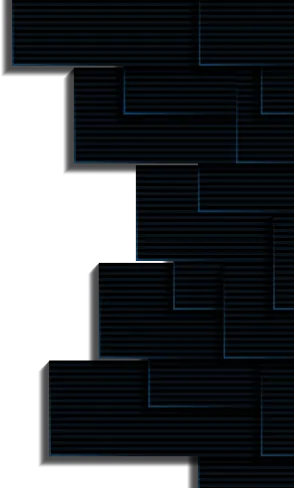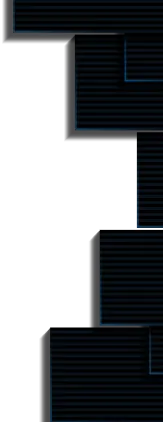Learn the Basics: What is Bitcoin
Sidharth

Globally, Bitcoin is considered to be the first decentralized digital currency. It is a digital asset that can be used as a payment method for goods and services. The protocol relies on peer-to-peer technology to verify transactions.
Initially valued at $0 when it was created in 2009, it has grown to become a global phenomenon. So let’s learn about the revolutionary currency system that is set to replace fiat currency in the near future, providing us with a safe, secure, and superfast transaction experience.
History of Bitcoin
When it comes to Bitcoin, Satoshi Nakamoto has become a name that no one can deny. He is the person believed to have invented Bitcoin. He originally published the Bitcoin whitepaper. The identity of Satoshi Nakamoto is still unknown. It is still unclear whether Satoshi Nakamoto is a single person or a group of people. During the initial days of Bitcoin, communication with Satoshi Nakamoto was performed electronically. As a result, no other details were available other than his name.
The inability to cover the name had led to significant hype and curiosity about Nakamoto’s identity, especially when cryptocurrencies skyrocketed in figures and popularity.
Even though it is still unclear who Nakamoto is, it is estimated that Satoshi Nakamoto owns around 5% of Bitcoin, which is worth about $50 billion. (The Anonymous Richie Rich)
Defining Bitcoin and how does it work?
Unlike traditional currencies, Bitcoin is neither issued by a central bank nor backed by a government. As a result, inflation rates, monetary policy, and economic growth indicators that traditionally influence currency value do not apply to Bitcoin.
Definition of Bitcoin
To put it simply, Bitcoin is a computer file stored in a digital wallet on your computer or mobile device. All the transactions that happened are recorded on a public ledger known as the Blockchain. It makes it easy to trace the Bitcoin history and prevents people from duplicating their transactions. The value of bitcoins is determined by how much other people are willing to pay for them, which makes it different from traditional currencies like dollars and euros. Bitcoins are not printed like dollars or euros; they are created through a process called mining.
Let's see what bitcoin mining is all about.
Bitcoin Mining Simplified
The process of bitcoin mining involves solving extremely complex computational math problems on computers with full computational power.
The process of mining Bitcoin is arduous, expensive, and, by chance, rewarding as well. In spite of this, mining has attracted many investors to cryptocurrency since miners reap crypto tokens in exchange for their computational efforts.
As a result, many people consider Bitcoin the new gold rush, as all we need to do is use supercomputers to solve complex mathematical problems and receive Bitcoins that are soaring in value.
Process to mine a Bitcoin:
Getting a Bitcoin mining rig:
A mining rig is a computer that is customized for cryptocurrency mining. During the initial mining period, the miners used personal computers and moved to GPUs for better chances. In recent times, There is a customized hardware that is specifically created to mine Bitcoin and other cryptocurrencies. They are known as ASIC (application-specific integrated circuit) chips). The main benefit of using an ASIC is less power consumption and more computational output.
Setting up a Bitcoin wallet:
After the mining rig is set up, it’s time to create a Bitcoin wallet. In addition to storing bitcoins, it can be used to conduct transactions in the future. Despite the fact that bitcoins are technically stored on a blockchain, the bitcoin wallet contains an address and its associated public key and private key.
Join a mining pool:
Day by day, mining Bitcoin is getting more difficult as the problems become more complex, and a single machine cannot handle all the load. Hence, miners create a mining pool to provide computing power to a group where bitcoins are mined. The gain is then divided among members according to their contributions of computational resources. Although the income is likely to be less, it is generated regularly. However, the pool operator has to pay a small fee for managing the mining pool, generally 0% to 2% of the reward.
Getting mining software:
After getting robust hardware, a Bitcoin wallet, and an active mining pool, one can now go ahead and get a mining program for their computers. With this program, one can connect to the Bitcoin and blockchain networks. The mining program delivers work to the miners, collects their total work, and adds all the data to the blockchain. Also, the mining software analyzes the miners' activities and monitors the basic statistics of the overall mining process.
Start mining:
Follow the following process to start once everything else mentioned above is completed:
- Power the miner with a power outlet.
- Link it to your computer and install mining software.
- Add wallet information and mining pool details to the mining software.
- Choose a device, and you are all set to mine your Bitcoins.
Bitcoin: A Peer-to-Peer Technology
Bitcoin uses a peer-to-peer network to operate with no central authority or banks; transactions are recorded on a public ledger. Miners verify and validate transactions by utilizing their computational power. Once a transaction is confirmed, it is automatically listed on the blockchain, and the miner who verified it first receives bitcoins as a reward.
Bitcoin is open-source, decentralized and nobody owns or controls it. Anyone can participate in the process and own Bitcoins in small amounts. Even though the governments of various nations have adopted strict monetary rules, Bitcoin transactions provide an unprecedented level of transparency and indomitable security that today's financial system fails to match.
Bitcoin's purpose: could it be considered real money?
The purpose of Bitcoin was to act as a counter-response to the 2008 financial crisis. The founder of Bitcoin, Satoshi Nakamoto, proposed the novel idea of creating a decentralized currency. Satoshi created a peer-to-peer payment system that did not rely on third-party confirmation. This system eliminates the bank from the transaction process. Bitcoin operates on "proof of work," which solves mathematical algorithms to verify and confirm transactions using a peer-to-peer network.
Is Bitcoin real money?
Technically, yes.
It is a digital currency that cannot be seen, but it can be used to purchase products and services online. However, it has yet to reach its full potential.
Bitcoin is accepted by approximately 15,174 businesses worldwide, with around 2,300 operating in the United States. According to the U.S. Bitcoin ATM network, 36,659 machines were available as of April 2022.
Businesses in Canada and the UK have also started accepting Bitcoin as a payment method.
FAQs for Beginners
Who controls the Bitcoin network?
Bitcoin is independent and autonomous. There is no single entity controlling Bitcoin; people worldwide hold the decentralized public ledger. The developers keep improving the software, but people on the network are free to accept updates or work on previous ones.
Why do people trust Bitcoin?
Bitcoin is fully decentralized and has open-source code. Anyone can access the entire source code from anywhere, at any time, and verify how Bitcoin operates. No organization, no government, or any single individual can control Bitcoin. Trust in this platform is built by its users' collective contributions, which power its distributed network.
What determines Bitcoin’s price?
Bitcoin follows the demand-and-supply principle. When the demand is high, the price rises; the price drops when the demand is low. Bitcoin's value will continue to rise until all bitcoins have been mined, causing its price to stabilize.
How many bitcoins are there?
There are 21 million bitcoins, of which only 19,207,175 have been mined. This number changes about every 10 minutes when new blocks are mined. Right now, each added block adds 6.25 bitcoins to the system. It is estimated that the last Bitcoin will be mined in 2140.
How difficult is it to make a Bitcoin payment?
Compared to debit or credit card purchases, bitcoin payments are simpler to process and can be accepted without a merchant account. Using a wallet application on your computer or smartphone, you can send payments by entering the recipient's address and the payment amount before pressing the Send button.





Subscribe to receive Alpha!
Join 4.3k subscribers from renowned companies worldwide and get a weekly update in your inbox. Stay updated on the latest and finest projects and product updates.

